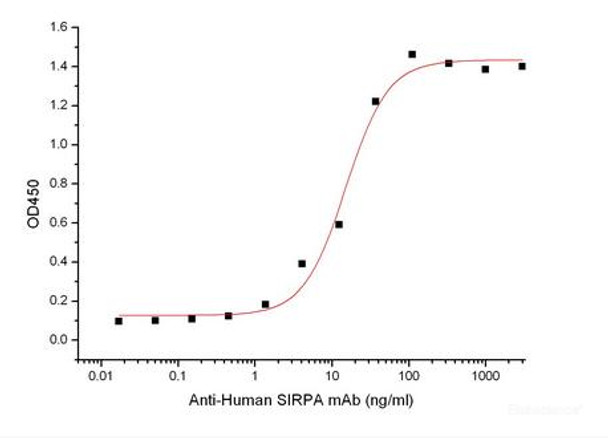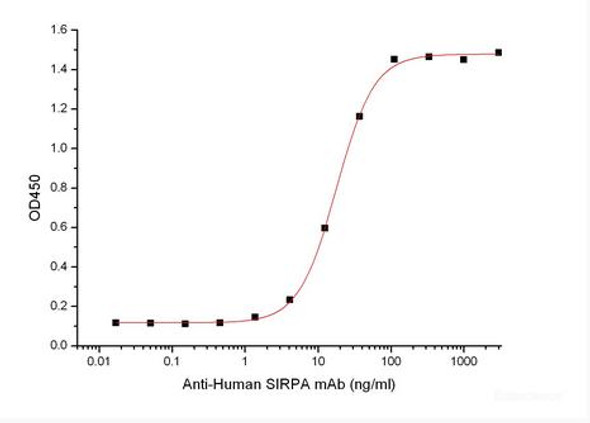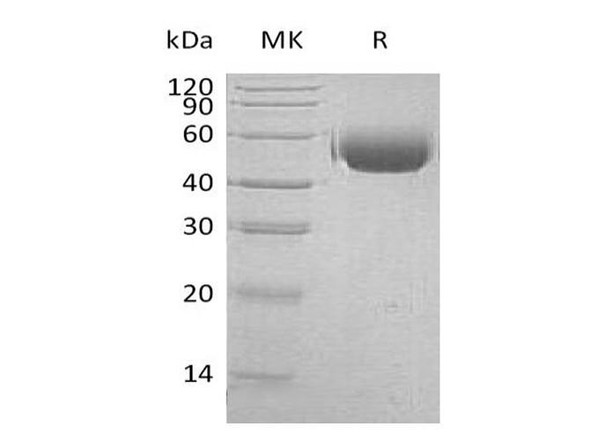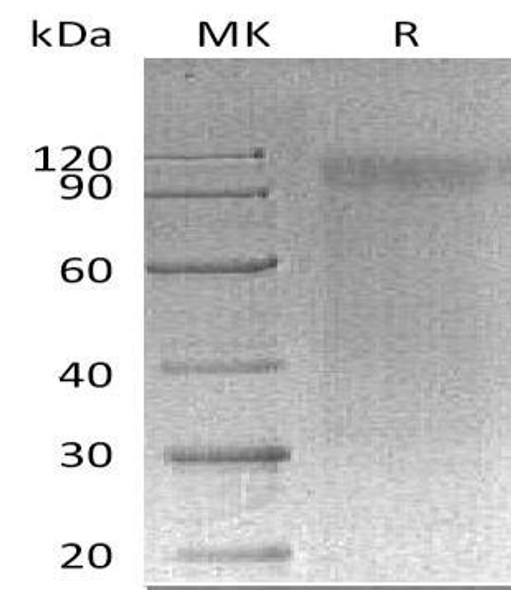Human Signal-Regulatory Recombinant Protein alpha-1/SIRPA/CD172a (C-6His)
- SKU:
- RPES6233
- Product Type:
- Recombinant Protein
- Species:
- Human
Frequently bought together:
Description
| Product Name: | Human Signal-Regulatory Recombinant Protein alpha-1/SIRPA/CD172a (C-6His) |
| Product Code: | RPES6233 |
| Size: | 10µg |
| Species: | Human |
| Expression Host: | HEK293 Cells |
| Synonyms: | Tyrosine-Protein Phosphatase Non-Receptor Type Substrate 1, SHP Substrate 1, SHPS-1, Brain Ig-Like Molecule with Tyrosine-Based Activation Motifs, Bit, CD172 Antigen-Like Family Member A, Inhibitory Feceptor SHPS-1, Macrophage Fusion Receptor, MyD-1 Antigen, Signal-Regulatory Protein Alpha-1, Sirp-Alpha-1, Signal-Regulatory Protein Alpha-2, Sirp-Alpha-2, Signal-Regulatory Protein Alpha-3, Sirp-Alpha-3, p84, CD172a, SIRPA, BIT, MFR, MYD1, PTPNS1, SHPS1, SIRP |
| Mol Mass: | 38.1 kDa |
| AP Mol Mass: | 45-60 kDa |
| Tag: | C-6His |
| Purity: | > 95 % as determined by reducing SDS-PAGE. |
| Endotoxin Level: | < 1.0 EU per μg of the protein as determined by the LAL method. |
| Bio Activity: | Immobilized Human SIRPA-6His at 10μg/ml (100 μl/well) can bind Anti-Human SIRPA mAb-Fc. The ED50 of Anti-Human SIRPA mAb-Fc is 15.1 ng/ml. |
| Sequence: | Glu31-Arg370 |
| Accession: | P78324 |
| Storage: | Generally, lyophilized proteins are stable for up to 12 months when stored at -20 to -80°C. Reconstituted protein solution can be stored at 4-8°C for 2-7 days. Aliquots of reconstituted samples are stable at < -20°C for 3 months. |
| Shipping: | This product is provided as lyophilized powder which is shipped with ice packs. |
| Formulation: | Lyophilized from a 0.2 μm filtered solution of 20mM PB, 150mM NaCl, pH 7.2. Normally 5 % - 8 % trehalose, mannitol and 0.01% Tween80 are added as protectants before lyophilization. Please refer to the specific buffer information in the printed man |
| Reconstitution: | Please refer to the printed manual for detailed information. |
| Background: | Signal Regulatory Protein α (SIRPα) is a monomeric approximately 90 kD type I transmembrane glycoprotein. The 504 amino acid human SIRPα contains two Ig-like C1-type domains and one Ig-like V-type domain. SIRPα can express in various tissues, mainly on brain and myeloid cells, including macrophages, neutrophils, dendritic and Langerhans cells. It also can detect in neurons, smooth muscle and endothelial cells. SIRPA is an immunoglobulin-like cell surface receptor for CD47. SIRPα acts as docking protein and induces translocation of PTPN6, PTPN11 and other binding partners from the cytosol to the plasma membrane. SIRPα shows adhesion of cerebellar neurons, neurite outgrowth and glial cell attachment. SIRPα engagement generally produces a negative regulatory signal; it may mediate negative regulation of phagocytosis, mast cell activation and dendritic cell activation |









